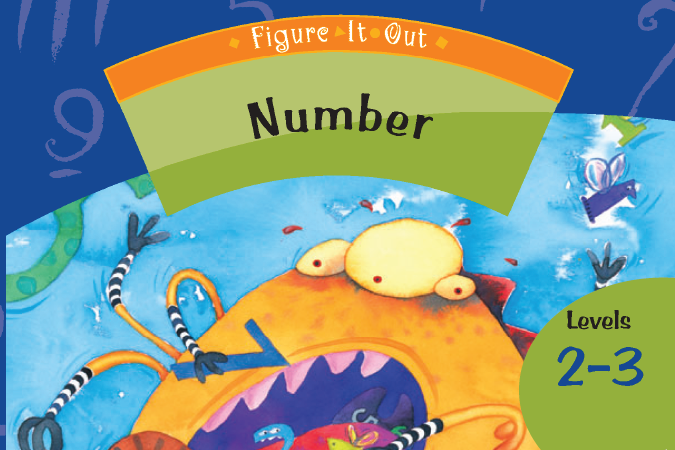How many?
This is a level 2 number activity from the Figure It Out series. It relates to stage 5 of the number framework. A PDF of the student activity is included.

About this resource
Figure It Out is a series of 80 books published between 1999 and 2009 to support teaching and learning in New Zealand classrooms.
This resource provides the teachers' notes and answers for one activity from the Figure It Out series. A printable PDF of the student activity can be downloaded from the materials that come with this resource.
Specific learning outcomes:
- Find fractions of a set.
How many?
Achievement objectives
NA2-1: Use simple additive strategies with whole numbers and fractions.
Required materials
- Figure It Out, Levels 2–3, Number, "How many?", page 20
- calculator
See Materials that come with this resource to download:
- How many activity (.pdf)
Activity
This page focuses on students finding fractions of a set. Sets are an important model for fractions, particularly since they occur in many practical contexts, as shown with the three activities given here.
The problem could be solved by using counters as models for the children in the class. Having counted out 32 counters, the students will need to find one-eighth of the set by dividing the counters into eight equal subsets. They may then assign these subsets to each activity.

Understanding how fractional numerals are written is critical. One-quarter suggests that the set has been divided into four equal subsets (parts) and that one of those subsets is chosen. Encourage students to see the connection between fraction notation and division; for example, 1/4 is equivalent to 1 ÷ 4, and 3/8 is equivalent to 3 ÷ 8.
This can allow a numerical approach rather than relying on equipment. In this activity, 32 ÷ 8 = 4 gives the number of children in each eighth, and 2 x 4 = 8 gives the number who play touch rugby because 1/4 is 2 x 1/8.
Although question 1 can be solved by modelling with counters or similar apparatus, it is much more efficient to work out the problem numerically:
a. 1/4 of 60 is 60 divided by 4 = 15 taro
b. 1/4 of 60 is 60 divided by 4 = 15 kūmara
c. 1/3 of 60 is 60 divided by 3 = 20 yams
d. 1/6 of 60 is 60 divided by 6 = 10 breadfruit
In question 2, the number of each vegetable is doubled if the recipe is doubled. Students will need to recognise that the ratios (fractions) remain constant although the numbers of vegetables change.
The aim of this activity is for students to recognise how to record fractions seen in the context of sets and to recognise equivalent fractions (fractions with the same value) in this context. In each case for questions 1a, b, and c, students may make statements such as:
- Twelve of the children are wearing blue togs.
Prompt a move towards fraction symbols with questions such as:
- How many children are swimming at the pool altogether? (24)
- So 12 out of 24 children are wearing blue togs. How could we write that down using fractions? (12/24)
- Is there an easier way to describe this fraction? (1/2)
If students’ responses to the last question are unclear, you could prompt them by making models of the colour of children’s togs, using counters, and dividing the counters into blue and non-blue subsets. This will also allow question 2 to be modelled by removing two blue and three yellow counters and adding one green counter. Subsets can be separated out to answer each question.
For example, for question c:

Activity 1
Touch rugby: 8
T-ball: 4
Irish dancing: 8
Netball: 12
Activity 2
1.
a. 15
b. 15
c. 20
d. 10
2.
No
Activity 3
1.
a. 12/24 or 1/2
b. 4/24 or 1/6
c. 8/24 or 1/3
2.
a. 10/20 or 1/2
b. 1/20
c. 5/20 or 1/4
The quality of the images on this page may vary depending on the device you are using.


